#solar powered fountain pump
Text
Things to Do that Aren't Related to Growing Plants
This is my second post in a series I’ll be making on how to increase biodiversity on a budget! I’m not an expert--just an enthusiast--but I hope something you find here helps!
Some of us just don’t have much luck when it comes to growing plants. Some of us simply want to aim for other ways to help that don’t involve putting on gardening gloves. Maybe you've already got a garden, but you want to do more. No problem! There’s a couple of options you can look into that’ll help attract wildlife in your area without even having to bring out any shovels!
Provide a Water Source
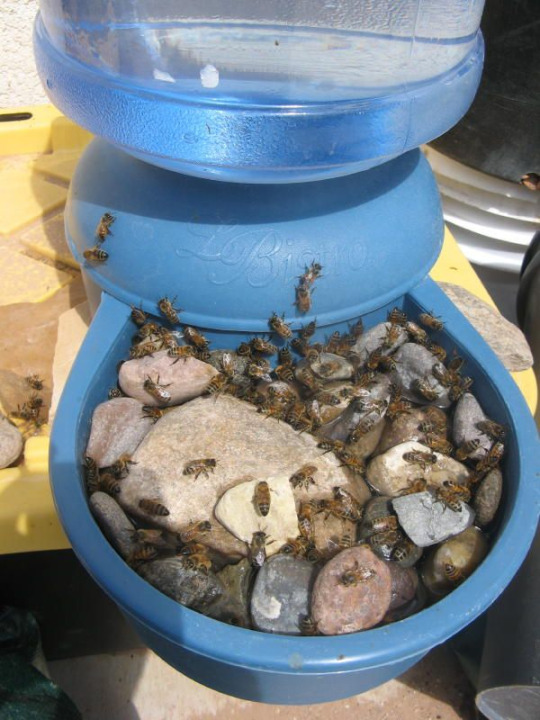
Oftentimes when I see ‘add a water source’ in informational articles about improving your backyard for wildlife, it’s almost always followed by an image of a gorgeous backyard pond with a waterfall and rock lining that looks expensive to set up, difficult to maintain, and overall just… not feasible for me. Arguably, not feasible for a lot of people. And that’s okay! There’s still ways to add water in your garden for all kinds of creatures to enjoy!
There’s tons of ways to create watering stations for insects like bees and butterflies. A self refilling dog bowl can work wonders! Add some stones into the receiving tray for insects to land on or use to climb out, and you’ve got a wonderful drinking spot for all kinds of insects! You can also fill a saucer or other dish with small stones and fill it, though it’ll likely need refilling daily or even several times a day during hot times.
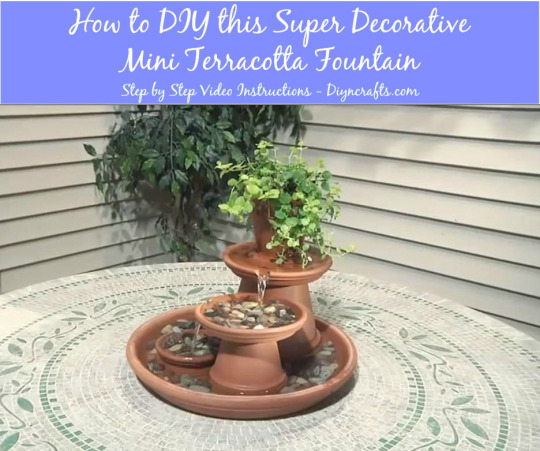
I've seen people online use all kinds of things to make water features. Some go with terra-cotta pots, pebbles, and a cheap pump to get a small and simple fountain. Others use old tires, clay, and a hole in the ground to create an in-ground mini pond system. If all else fails, even a bucket or watertight box with a few plants in it can do the trick--though do be wary of mosquitoes if the water isn’t moving. In situations like these, a solar-powered fountain pump or bubbler are great for keeping the water moving while still making it a drinking option for wildlife (it not even more appealing for some)--and these items can be obtained fairly cheap online!
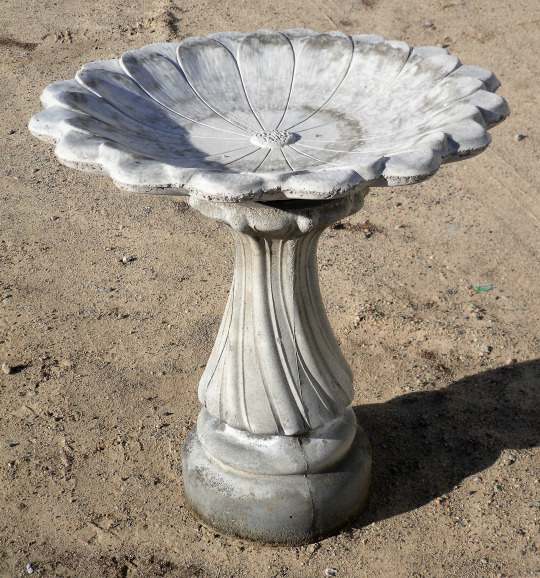
Bird baths are an option as well--a classic way to provide for birds in your area, they can be easy to find online or in a gardening store! The only downside is that a good, quality bird bath can be pricey up-front. However, a nice stone bird bath should last a long time, be easy to clean and refill, and be enjoyed by many birds! I’ve also seen tutorials on how to make your own with quickcrete! Bird baths will be a welcome sight to birds, as they provide a space for them to drink and bathe to regulate the oils in their feathers for flight and insulation. Putting a stone in the middle will also help insects to escape if they fall in, and provide a place to perch so they can get their own drink. You’ll want to change the water and clean the baths regularly--as often as once a week, if you can manage it.
If possible, it’s highly encouraged to fill and refill water features with rainwater instead of tap water. Tap water is often treated, so instead of using hoses or indoor kitchen water, collecting some rainwater is a great alternative. Collecting rainwater can be as simple as leaving cups, bins, or pots outside for awhile.
Butterflies and other creatures will also drink from mud puddles. If you can maintain an area of damp soil mixed with a small amount of salt or wood ash, this can be fantastic for them! Some plants also excel at storing water within their leaves and flowers (bromeliads come to mind), making them an excellent habitat for amphibians as well as a drinking spot for insects and birds.
Bird Feeders and Bird Houses

Some of the fancy, decorated bird feeders are expensive, but others can be pretty low-cost--I got my bird feeder from Lowe’s for around 10 dollars, and a big bag of birdseed was around another 10 dollars and has lasted several refills! If you don’t mind occasionally buying more birdseed, a single birdfeeder can do a lot to attract and support local birds! If you’re handy, have some spare wood, and have or can borrow some tools, you may even be able to find instructions online to make your own feeder. You may not even need wood to do so! Even hummingbird feeders, I’ve found, are quick to attract them, as long as you keep them stocked up on fresh sugar water in the spring and summer!
An important note with bird feeders is that you have to make sure you can clean them regularly. Otherwise, they may become a vector for disease, and we want to avoid causing harm whenever possible. Also keep an ear out and track if there’s known outbreaks of bird diseases in your area. If local birding societies and scientists are advising you take your birdfeeders down for awhile, by all means, do it!

Bird houses are naturally paired with bird feeders as biodiversity promoters for backyard spaces, and it makes sense. Having bird houses suited to birds in your area promotes them to breed, raise their young, disperse seeds, and generally engage in your surrounding environment. Setting them up takes careful selection or construction, preparation, and some patience, but sooner or later you might get some little homemakers! Keep in mind, you will need to clean your birdhouses at least once a year (if not once per brood) to make sure they’re ready and safe for birds year after year--you wouldn’t want to promote disease and parasites, after all. But they could be a valuable option for your landscape, whether you purchase one or construct your own!
Again, do make sure you're putting up the right kind of boxes for the right kinds of birds. Bluebird boxes are some I see sold most commonly, but in my area I believe they're not even all that common--a nesting box for cardinals or chickadees would be far more likely to see success here! And some birds don't even nest in boxes--robins and some other birds are more likely to use a nesting shelf, instead! Research what birds live in your area, take note of any you see around already, and pick a few target species to make homes for!
Solitary Bee Houses

A bee house or bee hotel is a fantastic way to support the solitary bees in your area! For a few dollars and some annual cleaning, you can buy a solitary bee house from most big box nurseries. Alternatively, you can make one at home, with an array of materials you may already have lying around! You can even make them so that they’ll benefit all kinds of insects, and not necessarily just bees.
Though you don’t even necessarily have to break out the hammer and nails, buy a ton of bricks, or borrow a staple gun. Making homes for tunneling bees can be as simple as drilling holes in a log and erecting it, or drilling holes in stumps and dead trees on your property. You might even attract some woodpeckers by doing this!
Providing Nesting Area
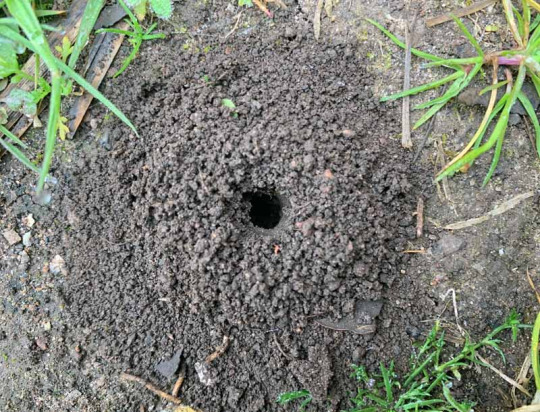
There are tons of different kinds of bees, and they all make different kinds of homes for themselves. Not all of them make big cavity hives like honey bees, or will utilize a solitary bee house. Bumblebees live in social hives underground, particularly in abandoned holes made by rodents--some others nest in abandoned bird nests, or cavities like hollow logs, spaces between rocks, compost piles, or unoccupied birdhouses. Borer, Ground, and Miner bees dig into bare, dry soil to create their nests. Sparsely-vegetated patches of soil in well-drained areas are great places to find them making their nests, so providing a similar habitat somewhere in the garden can encourage them to come! I do talk later in this document about mulching bare soil in a garden--however, leaving soil in sunny areas and south-facing slopes bare provides optimal ground nesting habitat. Some species prefer to nest at the base of plants, or loose sandy soil, or smooth-packed and flat bare ground. They’ve also been known to take advantage of soil piles, knocked over tree roots, wheel ruts in farm roads, baseball diamonds and golf course sand traps. You can create nesting ground by digging ditches or creating nesting mounds in well-drained, open, sunny areas with sandy or silty soil. However, artificially constructed ground nests may only have limited success.
Providing Alternative Pollinator Foods
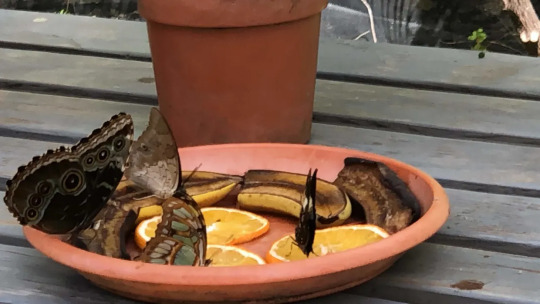
Nectar and pollen aren’t the only foods sought out by some pollinators! Some species of butterflies are known to flock to overripe fruit or honey water, so setting these out can be an excellent way to provide food to wildlife. You may want to be cautious about how you set these out, otherwise it can help other wildlife, like ants or raccoons. Butterflies may also drop by to visit a sponge in a dish of lightly salted water.
Bat Houses and Boxes
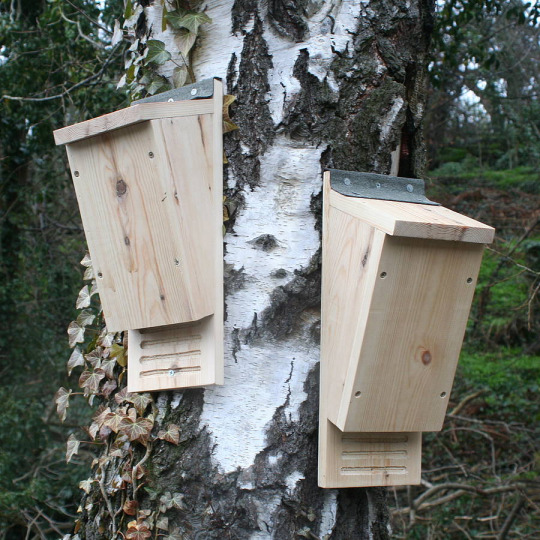
Big or small, whether they support five bats or five hundred, making bat boxes and supporting local bats is a great way to boost biodiversity! Not only will they eat mosquitoes and other pest species, but you may also be able to use the guano (bat droppings) as fertilizer! Do be careful if you choose to do that though--I’ve never had the opportunity to, so do some research into how strong it is and use it accordingly.
Provide Passageway Points
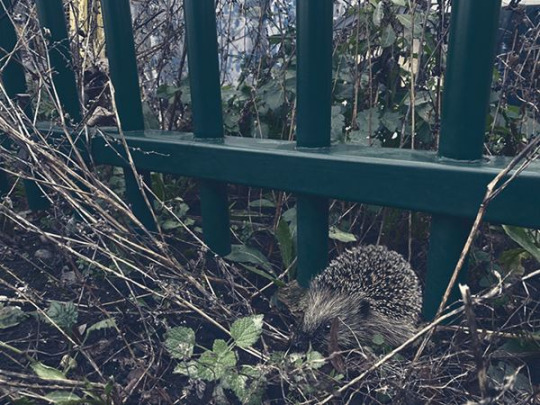
If you want your area to be more accessible for creatures that can’t fly or climb fences, allowing or creating access points can be an excellent way to give them a way in and out. Holes in the bottom of walls or fences can be sheltered with plants to allow animals through.
In a somewhat similar manner, if you’re adding a water fixture, it’s important to provide animals a way to get into and out of the pond--no way in, and they can’t use the water. No way out, and they may drown. Creating a naturalistic ramp out of wood beams or sticks, or stepped platforms out of bricks, stones, or logs can do the trick.
Get or Keep Logs and Brush Piles

I’ve already mentioned logs a good handful of times so far in this post. To be used as access ramps, or as nesting areas for solitary bees. But they have value as much more than that! Logs on the ground provide shelter for all kinds of animals, especially depending on size--anything from mice, reptiles, and amphibians to things like turkey vultures and bears will use fallen logs as shelter. Inside of a decaying log, there’s a lot of humidity, so amphibians are big fans of them--meanwhile, the upper sides of them can be used as sunning platforms by things like lizards. Other animals can also use the insides of logs as nest sites and hiding places from predators too big to fit inside. Fungi, spiders, beetles, termites, ants, grubs, worms, snails, slugs, and likely much more can be found inside rotting logs, using the rotting wood as food sources or nesting places. They can then provide food for mammals, amphibians, reptiles, and birds. They can also be regarded as a landmark or territory marker as wildlife get more familiar with your space.
So how do you get logs for cheap? Try Chip Drop! I talk about them more in a future post, but you can mark saying that you’d like logs in your drop, so they’ll give you any they have! In fact, you may even get a drop faster if you're willing to accept some logs. You may also be able to approach arborists you see working in your area and ask for logs. There may also be local online listings for people selling logs for cheap, or just trying to get rid of them. If there’s land development going on near you, you may be able to snag logs from trees they cut down to make space. Do keep in mind, you don’t need to have huge gigantic logs laying around your property to make an impact--even small logs can help a lot.

If possible, creating and leaving brush piles on the edge of your property can be a great boost to biodiversity--even if you may not see the wildlife using it. They’ll provide shelter from weather and predators, and lower portions are cool and shady for creatures to avoid the hot sun. The upper layers can be used as perch sites and nest sites for song birds, while lower layers are resting sites for amphibians and reptiles, and escape sites for many mammals. As the material decays, they also attract insects, and as such they’ll attract insect-eating animals too. As more small animals find refuse in your brush pile, their predators will be attracted to them as well. Owls, hawks, foxes, and coyotes are known to visit brush piles to hunt. Making a brush pile can be as simple as piling branches and leaves into a mound, as big or as small as you want. You can even use tree stumps or old fence posts near the base, and keep stacking on plant trimmings and fallen branches. Do note that you don’t want to do this near anything like a fire pit.
Don't forget, with all of these, your mileage may vary for any variation of reasons, so don't worry if you can't take all of even any of these actions! Even just talking about them with other people may inspire someone else to put out a bat box, or leave a few logs out for wildlife!
That's the end of this post! My next post is gonna be about ways to get seeds and plants as cheaply as possible. For now, I hope this advice helps! Feel free to reply with any questions, success stories, or anything you think I may have forgotten to add in!
#biodiversity#solarpunk#environmental stewardship#gardening#outdoor gardening#(i know this is literally the Dont Gotta Garden post but these could also be excellent additions to a preexisting garden so)#ani rambles#out of queue#the biodiversity saga#here in the tags to once again emphasize your mileage may vary with all of these#my mom is scared of bats theres no way in hell shes gonna let me put up a bat box#but I have been able to put out a shallow bird bath and a little solarpowered hummingbird bath fountain#do what you can! every bit counts! You may be able to do something that I or your neighbors can't!#for example my nextdoor neighbors have literally no trees in their backyard where the hell would they put a bat box#meanwhile i have trees in my backyard but still can't put up a bat box. maybe the neighbors next to me could!#similarly brush piles are a no go for my family but someone somewhere else could set one up!#i am rambling in the tags now uh long story short do what you can don't stress about what you can't
4K notes
·
View notes
Text
Water Backup: What You Need to Know
Water Backup: What You Need to Know
Water Backup Coverage – What is Water Backup?
There are many things to consider when considering water backup coverage. First of all, you should know that it is possible for your basement to become flooded and cause water backup in your home. If this happens, you can qualify for loss of use coverage under your flood insurance. In some cases, you may qualify for additional coverage if you are…

View On WordPress
#basepump rb750 water powered backup sump pump#solar water fountain pump with battery backup#solar water pump with battery backup
0 notes
Text
How to propagate your own African violets, in 17 easy-to-follow steps
Here I will teach you how to save loads of money by propagating your own baby African violets easily at home:
Step 1. Buy a single African violet from the plant nursery of your choice. Only about $6.99.
Step 2. Buy a second African violet, because the first one was purple, and this one is pink. $6.99
Step 3. Buy a third African violet, because this one has ruffly petals and white around the edges. $6.99
Step 4. Buy a bunch more African violets, because now you're obsessed and you get your jollies from buying more. $6.99 ea.
Step 5. Buy a greenhouse to put all the African violets in because they no longer fit on the window sill. $1,399 plus shipping and tax.
Step 6. Hire a guy to come build the greenhouse for you. $800
Step 7. Discover that African violets need humidity. Buy solar-powered fountain pump. $$
Step 8. Buy various sizes of glazed ceramic pots for the fountain to operate in. The first several don't work, keep buying more types to see what works. $$$
Step 9. Order on Amazon two types of plastic pots with clear plastic domes to promote growth of the baby African violets. Buy at least three sets of 25. $16.99 each.
Step 10. Get a bunch of African violet soil, $6.99 per bag.
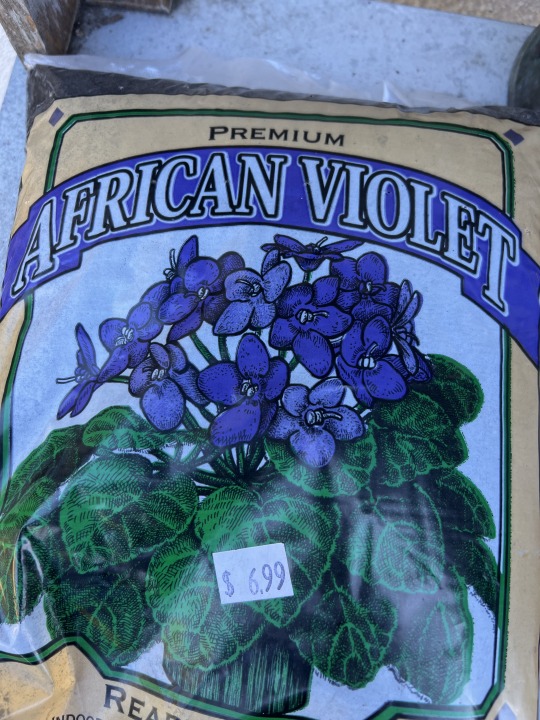
Step 11. Get a bunch of Perlite, the babies won't grow unless it's a mix of African violet soil plus Perlite, about 50/50 mixture. $8.99.

Step 12. Fill the first type of domed pots (shown below) with your clipped leaves from your favorite violets. This is where the pedal really hits the metal.


Step 13. Wait about two or three months, then move the leaves, which now have roots, to your larger pots with domes, so each plant has it's own little home.

Step 14. Once you completely lose control of the number of plants that you have going, you're going to need to move about 100 of them into the garage because there's not enough room in the greenhouse for all those plants, since you have the original plants too.

Step 15. At some point, you'll notice that a plant has some babies sprouting up!

Step 16. This is a great sign that you're doing something right. In just a few months, you'll have a new plant. And it was FREE! Good work saving money.
Step 17. Here's how it looks when the leaves get a little bigger. You will feel a great sense of satisfaction.
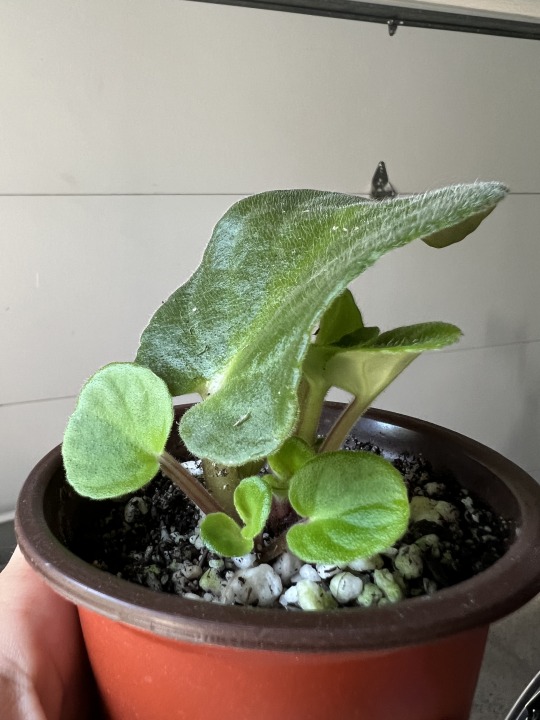
10 notes
·
View notes
Text
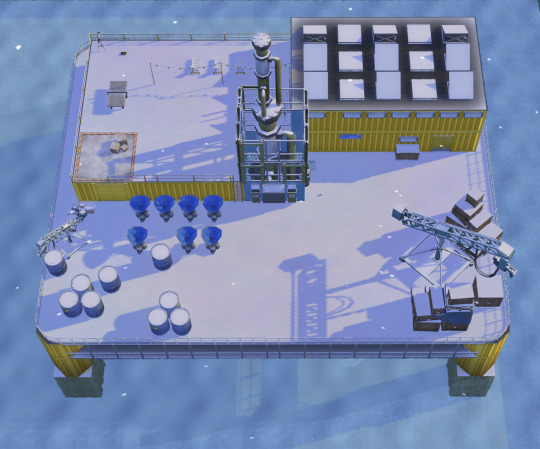
The helicopters arrive at their destinations, two artificial islands in the Greenland sea.
One of the pilots blinks when a sunray gets reflected by the iced over solar panels on the main building's toof, but quickly focuses again.

The helicopter lands on the lower roof, no easy feat, when the mobile oil rig bobs up and down. Pilot and co-pilot jump out...
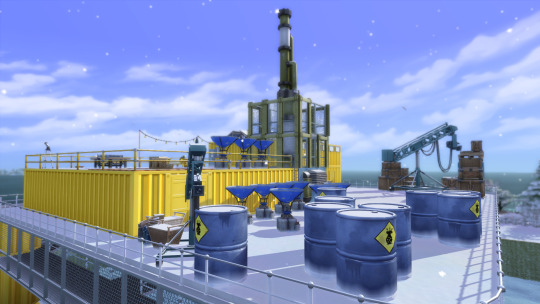
They dump the passengers inside the building and then re-fuel their vehicle. It is a peculiarity of this place, that a small capsula no bigger than a fountain pen's is enough to provide enough fuel for the ride back.
The substance pulled out of the arctic sea is not oil, but thirium, the most potent fossil fuel known to mankind, and base for thirium 310, the android powering fluid, as well as Red Ice, a problematic drug of the 2030s.
HOUSEHOLD 1: The thirium pump (8 sims)
4 notes
·
View notes
Text
Flowing Elegance: Unveiling the Magic of Fountain Pumps

In the realm of home decor and landscaping, few elements can rival the enchanting allure of a fountain. Whether gracing a tranquil garden or accentuating a modern indoor space, a fountain adds an element of serenity and sophistication. At the heart of this mesmerizing display lies a humble yet indispensable component: the fountain pump. Often overlooked, these unassuming devices are the true architects of the mesmerizing dance of water. Let's dive into the world of fountain pumps and uncover their magic.
1. Powering the Pulse: At the core of every fountain lies the fountain pump, serving as its beating heart. These pumps come in various sizes and capacities, tailored to suit the specific needs of different fountain designs. Whether it's a small tabletop fountain or a grand outdoor centrepiece, there's a pump designed to deliver the perfect flow rate and water pressure, ensuring a seamless performance.
2. Creating Rhythmic Harmony: The rhythmic dance of water in a fountain is a sight to behold, captivating observers with its graceful movements. This fluid choreography is made possible by the precise operation of the fountain pump. By circulating water from the reservoir to the fountain head, the pump orchestrates a symphony of cascading streams and gentle sprays, transforming any space into a tranquil oasis.
3. Enabling Versatile Designs: One of the most remarkable aspects of fountain pumps is their versatility, allowing for endless creativity in fountain design. Whether you prefer a classic tiered fountain, a contemporary minimalist design, or a whimsical sculpture fountain, the right pump can bring your vision to life. With adjustable flow rates and interchangeable nozzles, fountain pumps offer designers the freedom to explore different styles and effects.
4. Enhancing Ambiance: Beyond their functional role, fountain pumps play a crucial role in enhancing the ambience of any space. The soothing sound of trickling water can evoke a sense of calm and relaxation, making fountains a popular choice for meditation gardens, spa retreats, and outdoor lounging areas. Additionally, the mesmerizing visual display of water in motion adds a touch of elegance and sophistication to any environment, elevating the overall aesthetic appeal.
5. Maintaining Vitality: Just as the human heart sustains life, the fountain pump ensures the vitality of the fountain ecosystem. By keeping the water in constant motion, the pump helps prevent stagnation and algae growth, preserving water quality and clarity. This not only maintains the aesthetic appeal of the fountain but also creates a healthier environment for aquatic plants and wildlife that may inhabit the water feature.
6. Embracing Sustainability: In an era where environmental sustainability is paramount, fountain pumps offer an eco-friendly solution for water features. Many modern pumps are designed with energy-efficient motors and programmable settings, allowing users to minimize electricity consumption without sacrificing performance. Additionally, by incorporating eco-friendly materials and practices in fountain construction, such as recycled water and solar-powered pumps, it's possible to create sustainable water features that harmonize with the surrounding ecosystem.
Conclusion: As we unravel the mysteries of fountain pumps, it becomes clear that these unassuming devices are the unsung heroes of the fountain world. From powering the pulse of water to enhancing ambience and promoting sustainability, fountain pumps play a vital role in bringing the magic of flowing water to life. So, the next time you marvel at the beauty of a fountain, take a moment to appreciate the humble pump that makes it all possible.
1 note
·
View note
Text

Revamp Your Yard with These Affordable Water Feature Ideas
Sprucing up your yard with a water feature can transform it into a tranquil oasis where you can unwind and relax. However, many people shy away from incorporating water features into their outdoor spaces due to concerns about cost. Fear not! There are plenty of affordable options available that can add charm and serenity to your yard without breaking the bank.
1. DIY Container Pond
Creating a DIY container pond is an excellent way to add a water feature to your yard without spending a fortune. All you need is a large container, such as a whiskey barrel or a sturdy plastic tub, some aquatic plants, and a small pump. Dig a hole in the ground that's slightly larger than your container and place it in the hole. Fill the container with water, add some aquatic plants like water lilies or water lettuce, and install the pump to keep the water circulating. Voila! You have a charming little pond that will attract birds and butterflies to your yard.
2. Recirculating Fountain
Another budget-friendly water feature idea is a recirculating fountain. You can easily create one using inexpensive materials like a large ceramic pot, a submersible fountain pump, and some decorative stones. Simply place the pot in your yard, insert the pump, cover the base with stones to hide the pump, and fill it with water. Turn on the pump, and watch as the water cascades gently down the sides of the pot, creating a soothing sound that will add ambiance to your outdoor space.
3. Solar-Powered Water Feature
Harness the power of the sun to create a cost-effective water feature for your yard. Solar-powered fountains and water pumps are readily available and can be easily installed without the need for electrical wiring. Simply place the solar panel in a sunny spot in your yard, connect it to the fountain or pump, and watch as the sun powers your water feature for free. Not only is this option environmentally friendly, but it also saves you money on your energy bills.
4. Rock Waterfall
Turn an ordinary pile of rocks into a stunning waterfall feature for your yard. Collect various sizes and shapes of rocks from your property or a local quarry and arrange them in a cascading pattern to create a natural-looking waterfall. You can use a small pump to recirculate the water, or simply let it flow naturally down the rocks. Add some aquatic plants and moss to complete the look and create a serene focal point for your outdoor space.
5. Repurposed Fountain
Give new life to an old fountain by repurposing it into a unique water feature for your yard. Check out local thrift stores, yard sales, or online marketplaces for inexpensive fountain options that you can refurbish and customize to suit your style. With a fresh coat of paint and some creative landscaping, you can transform a forgotten fountain into a stunning centerpiece for your outdoor oasis.
6. Pondless Waterfall
If you love the sound of running water but don't want the maintenance hassle of a traditional pond, consider installing a pondless waterfall. This type of water feature consists of a recirculating pump hidden beneath a layer of decorative rocks or gravel, with water cascading down into an underground reservoir. Pondless waterfalls are low maintenance, energy-efficient, and can be customized to fit any size or shape yard.
7. Bamboo Water Feature
Create a Zen-like atmosphere in your yard with a bamboo water feature. Bamboo spouts are affordable and easy to install, and they add a touch of elegance to any outdoor space. Simply attach a bamboo spout to a water pump, place it in a decorative basin or container, and fill it with water. The gentle sound of water trickling through the bamboo will create a sense of tranquility and relaxation in your yard.
Enhancing your yard with a water feature doesn't have to break the bank. With a little creativity and resourcefulness, you can create a stunning outdoor oasis that you'll love spending time in. Whether you opt for a DIY pond, a recirculating fountain, or a solar-powered water feature, adding water to your yard is sure to elevate its beauty and provide a peaceful retreat for you to enjoy.
FAQs
Q1: Are water features difficult to maintain? A1: The level of maintenance required for a water feature depends on its size and complexity. However, many budget-friendly options, such as pondless waterfalls and recirculating fountains, require minimal upkeep and are easy to maintain.
Q2: Can I install a water feature myself, or do I need to hire a professional? A2: Many water features, especially DIY options like container ponds and recirculating fountains, can be installed by homeowners with basic DIY skills. However, if you're unsure or dealing with more complex installations, it may be wise to consult a professional.
Q3: Will adding a water feature increase the value of my home? A3: While a well-designed and maintained water feature can enhance the aesthetic appeal of your yard, its impact on your home's value may vary depending on factors such as location and market trends. However, it can certainly make your outdoor space more attractive to potential buyers.
0 notes
Text
What is a Solar Fountain? Unleashing the Power of the Sun for Stunning Water Features
A solar fountain is a type of water feature that converts solar energy into power to pump water. It beautifies outdoor spaces while conserving energy and lowering utility expenses.
The fountain can run without any other power source since solar panels capture sunlight during the day.
Exploring the Sun’s Power Through Solar Fountains
Solar fountains are an eco-friendly and unique way to bring…

View On WordPress
#Do solar fountains need electricity#How does a solar fountain work#How To Repair Your Solar Fountain#What is a Solar Fountain
0 notes
Text
10 Things To Consider Before Buying A Garden Water Feature

There are many logistics to consider before spending money on a garden water feature to decorate your dream home and to fill that vacant outside space. It covers everything, from routine maintenance to the water supply.
Before considering purchasing water features Melbourne to enhance the beauty of your outdoor space, if you live in Melbourne, there are many practical considerations, including general upkeep to the water supply.
Things you must know before purchasing water features
1. Buy a water feature that is in your budget. Before purchasing a water feature, always set a budget and a design in mind.
2. If you choose a water feature that has moving water and is not solar-powered, you will need an electricity supply to operate the pump.
3. Pay attention to the sound of the water feature: it's almost as important as its appearance. A feature that sounds like a bath filling up may not be very relaxing, while one that produces a barely-there trickle might not be pleasant. Choose a feature that makes a sound that you find soothing and relaxing.
4. Examine what's above your characteristics: in comparison, deciding where to put it. For example, if it's beneath a tree, it would receive a lot of leaves, requiring additional maintenance. For water features to last a long time, maintenance knowledge is therefore crucial.
5. Always choose water features that look attractive, like a trio bowl water feature, water fountains, buddha head water feature, and string water features to make your outdoors beautiful and eco-friendly.
You can also make your outdoor place attractive and stunning with Merbau decking Melbourne, merbau screening, Merbau dar, decorative screening, pre-oiled pine decking, faux green wall, bamboo fencing panels and incredibly eco-friendly and UV-protected and durable artificial grass to make your place aesthetic and attractive.
6. Water fountains and features function uniformly. Water is pumped up a pipe by a sump or water puddle. The water then returns to the reservoir due to gravity.
7. Always think about water feature maintenance because sometimes water will get contaminated with dust, algae, leaves, and dirt. So it is essential to know how to maintain water features for their durability and the way of maintenance.
8. Ponds and other static elements constitute the safest and most appealing items in your garden if you have little children playing there. Verify that none of the lighting fixtures or the fountains' water pump have exposed wires. Prioritising safety over everything else means that you should only select water features that both appeal to and protect your kids.
9. Consider the aesthetic style and designed water feature for your garden. In this, with designer water features, sometimes artificial grass Melbourne also complements the outdoor space.
10. Always assess the available space in your garden and choose the size of water features according to the size of your garden.
#water features#water feature melbourne#water fountains#indoor water feature melbourne#outdoor water feature melbourne#Wall Water features melbourne
1 note
·
View note
Text
Unveiling the Benefits of Water Garden Fountains for Homes
In the quest for tranquillity and an oasis of calm, the allure of water garden fountains has captured the hearts of homeowners and business owners alike. In this article, we will explore the myriad benefits of incorporating water garden fountains into your living spaces and commercial establishments, focusing on the expertise of Robin's Nest Aquatics, a leading authority in this field.

1. Aesthetic Appeal
Water garden fountains are undeniably beautiful, and we effortlessly elevate the visual appeal of any setting. At homes, we become captivating focal points in gardens, courtyards, or even indoors, serving as an exquisite blend of art and nature. In businesses, these fountains exude elegance, leaving a lasting impression on clients and creating an inviting atmosphere that can set the tone for a successful venture.
2. Stress Reduction
Modern life often inundated us with stress and anxiety. The soothing sound of flowing water from a fountain can work wonders in reducing stress and promoting relaxation. Whether you're unwinding after a long day at home or creating a peaceful atmosphere for your employees and customers in a business, the presence of a water garden fountain can have a calming effect, enhancing well-being and productivity.
3. Improved Air Quality
Water garden fountains have the added benefit of increasing air quality. As water circulates and evaporates, it releases negative ions, which can help purify the air by reducing allergens and pollutants. This leads to a healthier living and working environment, making homes and businesses more pleasant places to be.
4. Wildlife Attraction
The gentle babble of water is an irresistible invitation to birds, butterflies, and other wildlife. In homes, this can turn your garden into a mini wildlife sanctuary, creating an enjoyable, educational experience for family members, especially children. In businesses, it can add a touch of nature to your setting, enhancing the ambiance and making it more inviting.
5. Enhanced Property Value
Water garden fountains can significantly boost the value of your property. Our aesthetic appeal and positive impact on ambiance make your home more appealing to potential buyers. For businesses, a well-designed fountain can make a lasting impression on clients, improving the perceived value of your establishment.
6. Energy Efficiency
Robin's Nest Aquatics understands the importance of sustainable practices. Our expertly designed fountains often incorporate energy-efficient features, such as solar-powered pumps and LED lighting. This not only reduces energy consumption but also aligns with eco-friendly principles.
7. Customization and Versatility
One of the key advantages of working with experts like Robin's Nest Aquatics is the level of customization available. We can tailor water garden fountains to your specific requirements, matching your home's architectural style or business's branding. This flexibility ensures that the fountain seamlessly integrates into your space.
8. Low Maintenance
Contrary to common misconceptions, water garden fountains are relatively low-maintenance. Robin's Nest Aquatics offers advice on proper care, ensuring the longevity of your fountain. Regular cleaning and basic maintenance are usually all that's needed to keep your fountain running smoothly, and we can assist you with any issues that may arise.
9. Year-Round Beauty
With the right planning and maintenance, your water garden fountain can be enjoyed year-round. In colder climates, Robin's Nest Aquatics can provide guidance on winterization, preventing any damage during the frosty months, and allowing your fountain to continue enhancing your space even in the winter.
10. Brand Identity
For businesses, a well-designed water garden fountain can become an integral part of your brand identity. It serves as a memorable symbol of your commitment to excellence, aesthetics, and client satisfaction. It can create a positive impression that sets you apart from the competition.

Water garden fountains, as showcased by Robin's Nest Aquatics, bring a multitude of benefits to both homes and businesses. We offer a harmonious blend of aesthetics, serenity, and practical advantages, making them an appealing choice for anyone looking to enhance our surroundings. Whether it's the soothing sounds, improved air quality, or the increased property value, water garden fountains are more than just decorative additions – we're investments in well-being and success. By carefully selecting and maintaining these exquisite features, you can transform your space into an oasis of tranquillity, a hallmark of sophistication, and a source of pride.
0 notes
Text
A Guide to Choosing the Perfect Fountain Pump
Fountains can add a touch of elegance and tranquility to any outdoor space, be it a garden, courtyard, or even a balcony. However, to keep your fountain running smoothly and maintain its beauty, it's essential to choose the right fountain pump. This guide will walk you through the key factors to consider when selecting a fountain pump.
1. Determine the Fountain Size
Before you start shopping for top fountain pumps, it's crucial to know the size of your fountain. Measure the height of the water feature and the distance the water needs to travel from the pump to the top of the fountain. This will help you determine the required pump capacity.
2. Flow Rate
The flow rate of a fountain pump is measured in gallons per hour (GPH) or liters per hour (LPH). To create the desired water effect, you'll need a pump with an appropriate flow rate. For smaller fountains, a pump with a lower GPH will suffice, while larger fountains or those with multiple tiers will require a higher GPH. Flow rate will be determined by the size of the pump, the diameter of the tubing or piping that connects the pump to the fountain, and the vertical “head.”
3. Fountain Head Height
Consider the height the water needs to reach to create the desired visual effect, before you buy a pump for a small fountain. The higher the water needs to go, the more powerful the pump needs to be. Pay attention to the pump's head height rating. It should match or exceed the height you want the water to reach.
You see, pump flow ratings follow what’s called a “pump curve.”
Our FT-35 tabletop pump, for instance, has a maximum head of 18”. If the water only needs to pump up 3” high, it is doing about 35 gallons per hour. But at 12” high, it is only pumping about 12 gallons per hour. Our FT-650 has a max. head of about 120”. At 1” rise it is doing about 780 gallons per hour. But at 20”, the flow rate is approximately 680 gallons per hour. At 100”, the flow rate is about 300 gallons per hour. (And the size of tubing or piping will also influence these rates.)
4. Power Source
Fountain pumps can be powered by electricity or solar energy. Electric pumps are more reliable and suitable for larger fountains, while solar-powered pumps are eco-friendly and perfect for smaller setups. Choose the power source that best suits your fountain's location and your sustainability preferences. Unless a backup battery is used, solar pumps will only work in direct sunlight. If clouds pass between the sun and your solar panel, the motor will temporarily stop.
5. Pump Type
There are different types of fountain pumps available, including submersible and external pumps. Submersible pumps are placed directly in the water, making them discreet and easy to install. External pumps are installed outside the fountain and are often ideal for larger fountains or waterfalls.. Select the type that suits your fountain's design and maintenance preferences.
6. Material and Durability
Ensure that the fountain pump you choose is made of high-quality materials that can withstand exposure to water and the elements. Look for pumps with corrosion-resistant components to ensure longevity and durability.
7. Noise Level
The noise level of a fountain pump can vary greatly. If you want to create a peaceful and quiet environment, choose a pump that operates quietly. Check product specifications for noise level information. If you are using a pump in a confined space where vibrations are easy to hear, you might consider sitting your pump on spongey material to reduce the vibrations.
8. Maintenance
Consider the ease of maintenance when selecting a fountain pump. Submersible pumps are generally easier to access and clean. Read user reviews and product descriptions to get an idea of the maintenance requirements of the pump you're considering.
Conclusion
Choosing the right fountain pump is essential to ensure your fountain operates smoothly and beautifully. By considering factors like fountain size, flow rate, power source, pump type, durability, noise level, and maintenance, you can select the perfect pump for your specific needs. Invest time in selecting the right pump, and you'll enjoy a stunning and tranquil water feature for years to come. And whenever possible, try to find out what size pump your fountain manufacturer recommends.
0 notes
Text
Cultivating a Greener Future, One Garden at a Time

A groundbreaking notion has taken root in the field of sustainable living: Energy-Efficient Landscaping Design. This revolutionary landscaping strategy not only improves the physical splendor of outdoor areas, but it also leads to significant energy savings and a healthier world. Let us delve into the enthralling world of Energy-Efficient Landscaping Design and how it is cultivating a greener future one garden at a time.
A Symphony of Nature and Efficiency:
Natural components and ecological techniques coexist in Energy-Efficient Landscaping Design which saves Energy bill savings. It entails creating outdoor areas that blend in with the surrounding environment while optimizing energy efficiency. This revolutionary method goes beyond conventional aesthetics, combining ecological and efficiency concepts to create outdoor havens that benefit both residents and the environment.
Shade trees are both comfort and conservationists.
Shade trees skillfully placed to hide dwellings from the sun's unrelenting beams are at the core of energy-efficient landscaping. These living sentinels not only provide shade during the hot summer months, but they also lessen the demand for excessive air conditioning. Shade trees minimize energy consumption by moderating heat absorption through windows and roofs, resulting in lower power bills and lower carbon emissions.
Reflective Surfaces: Cooling Through Creativity:
Energy-Efficient Landscaping Design makes clever use of reflecting surfaces to reflect back the sun's heat, preventing surfaces from collecting too much heat. Light-colored pavements, paths, and even rooftops are examples of these surfaces. Reflective surfaces reduce heat absorption, resulting in a more pleasant outdoor experience while also lowering total energy consumption.
Watering Wisely Using Efficient Irrigation Systems:
Water is a valuable resource, and clever irrigation systems in energy-efficient landscaping know this. Drip irrigation, soil moisture sensors, and rainwater harvesting systems all assist to optimize water consumption by eliminating overwatering and lowering the energy necessary to pump and distribute water. This method not only saves water but also reduces the energy required for water management.
Solar-Powered Features: Illuminating Sustainability:
Energy-Efficient Landscaping Design incorporates solar-powered components in addition to plants and structures. From solar-powered outdoor lighting to solar-powered water fountains, these components not only improve the beauty of the environment but also capture renewable energy, decreasing reliance on traditional power sources.
Dual-Purpose Structures: Foliage Meets Functionality:
The use of dual-purpose buildings is a fascinating component of energy-efficient landscaping. Consider pergolas with climbing plants to give shade while also functioning as a natural cooling feature. These structures offer pleasant outdoor places for relaxing while also improving the home's overall energy efficiency.
Cultivating a Greener Tomorrow:
Energy-Efficient Landscaping Design goes beyond aesthetics to have a meaningful influence on energy usage and environmental preservation. As more homeowners adopt these ideals, the ripple effect spreads throughout communities, building a culture of sustainability. The lessons acquired from these landscapes transcend property lines, prompting urban planners, architects, and individuals to pursue similar techniques that promote energy conservation and ecological harmony.
Conclusion
Energy-Efficient Landscaping Design is more than a passing fad; it demonstrates our dedication to encouraging a harmonious cohabitation with nature. These landscapes serve as living legacies that inspire us to create a brighter, greener future for future generations through deliberate planning, inventive architecture, and an unrelenting commitment to sustainability. Energy-efficient landscapes serve as beacons of hope, reminding us that a sustainable society is both attainable and attractive, as leaves rustle, water features shine, and solar-powered lights brighten the night.
1 note
·
View note
Text
Transform Your Backyard Oasis: DIY Garden Projects to Try

Do you dream of having a beautiful and relaxing backyard oasis? A place where you can escape the stresses of daily life and bask in the beauty of nature? Well, you're in luck! With a little creativity and some DIY skills, you can easily transform your backyard into a haven of tranquility. In this article, we will explore some exciting DIY garden projects to try that will make your backyard the envy of the neighborhood.
1. Build a Vertical Garden
If you have limited space in your backyard, a vertical garden is the perfect solution. It not only maximizes space but also adds a visually stunning element to your outdoor space. You can create your own vertical garden by repurposing a ladder or using wall-mounted planters. Choose a variety of plants with different textures and colors to create a vibrant and eye-catching display.
2. Install a Water Feature
The sound of running water has a calming effect on the mind and can transform your backyard into a peaceful oasis. Install a water feature like a small fountain or a pond to add a touch of serenity to your outdoor space. You can even go a step further and create a mini waterfall using rocks and a pump. The soothing sound of water flowing will create a zen-like atmosphere that is perfect for relaxation.
3. Create a Cozy Seating Area
No backyard oasis is complete without a comfortable seating area where you can unwind and enjoy the beauty of your surroundings. Invest in some quality outdoor furniture like a lounge chair, hammock, or a swing. Arrange the seating area in a way that maximizes the view of your garden. You can add some cushions, throw pillows, and a colorful outdoor rug to make it even more inviting.
4. Build a Fire Pit
Extend the usability of your backyard into the evening by building a fire pit. It will not only keep you warm on chilly nights but also create a cozy and intimate atmosphere. You can build a fire pit using bricks or purchase a portable one. Don't forget to add some seating around the fire pit, so you and your guests can comfortably sit and enjoy the warmth of the fire while stargazing.
5. Construct a DIY Planter Box
Bring a touch of greenery and freshness to your backyard by building your own planter box. It's an excellent project for both gardening enthusiasts and beginners. You can customize the size and shape to fit your space and choose the type of plants you want to grow. A planter box filled with colorful flowers or aromatic herbs will add beauty and fragrance to your backyard oasis.
6. Install Outdoor Lighting
Proper lighting can transform your backyard into a magical and enchanting space, even after the sun sets. Install outdoor lighting fixtures like fairy lights, lanterns, or solar-powered LED lights to create a warm and inviting ambiance. Place the lights strategically around your garden to highlight architectural features, walkways, and plants. The soft glow of the lights will create a cozy and inviting atmosphere for entertaining or relaxing.
7. Build a DIY Pergola
A pergola adds an elegant and stylish touch to any backyard. It provides shade, privacy, and a structure for climbing plants like vines or roses. Building a DIY pergola might take a little more time and effort, but the end result will be worth it. There are various pergola designs and materials to choose from, so pick one that complements your overall backyard aesthetic. Hanging some outdoor curtains or installing a retractable canopy will add an extra level of comfort and sophistication.
Conclusion
Transforming your backyard into a beautiful oasis doesn't have to be a daunting task. With a little imagination and some DIY garden projects, you can create a space that brings you joy and serenity. Whether it's building a vertical garden, installing a water feature, or constructing a DIY pergola, these projects will not only enhance the beauty but also the functionality of your outdoor space. So, roll up your sleeves and get ready to turn your backyard into a stunning oasis that you can enjoy year-round.
Read the full article
#Backyard#Beauty#Color#Cozy#Doityourself#EasyProjects#Garden#Gardening#Herbs#Idea#Nature#outdoorfurniture#outdoorlighting#Plants#Skills#Space
0 notes
Text
The Benefits of Solar Bird Baths: A Plumber's Guide
FacebookTwitterShare
The advantages of solar birdbaths far outweigh any fuss or muss associated with their installation. First of all solar powered bird baths are not very hard to install as they do not really require any extra plumbing or wiring.
Plumber Gilbert AZ
They are also very economical as they harness the power of the sun’s rays to naturally heat the water in the bird bath. Needless to say, this type of bird bath, which usually features a running fountain in the center as well, can save you tons of money when it comes to your energy bills.
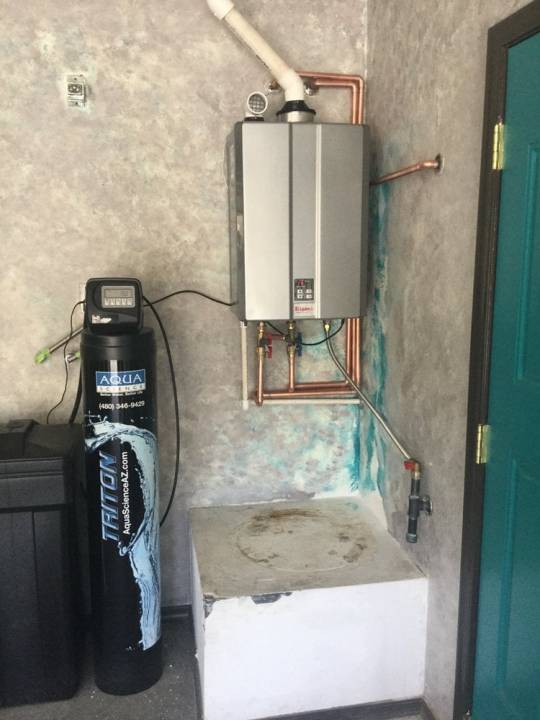
There are several types of solar bird baths on the market including ones that run a circulating fountain in the window to keep the water from freezing in the Plumber Gilbert AZ winter and ones that have a cover to prevent other animals from getting into the bath water. The one component that all solar bird baths on the market have in common is the solar panel that provides energy for its operation.
One of the advantages of solar bird baths is that the birds always have access to fresh circulating water. This running water is better for them to bathe and drink, as it is less likely to contain bacteria and viruses. A solar powered panel located in the bowl powers a pump in the reservoir hidden in the base. The pump then efficiently circulates the water, which prevents it from stagnating. This means the water won’t go green, smell or attract too many mosquitoes.
Another advantage of solar bird baths is that they do not require a cord or any wiring. This means that they can be placed anywhere on a lawn without you having to worry about a power source. All that matters is that they must be placed on a flat stable surface to make sure that the water flows through the bird bath’s fountain pump smoothly and does not splash. The fact that these solar powered bird baths can be placed anywhere in a yard is also a boon for landscape architects as well as people who forget to unplug ordinary birdbaths when they mow the lawn.
Yet another benefit of owning a solar operated bird bath is that it is relatively inexpensive. The fact that it is heated water helps birds have a constant source of water in winter climates. You can also use a small heater in tandem with the solar bird bath to make sure that the birds stay hydrated and warm.
In terms of maintenance some types of solar bird baths may need their solar panels removed in the winter and replaced with a non-solar insert during the winter months. This is particularly recommended if you live in a climate here there is no sun at all. However if you live in a climate with a lot of cold, yet unny days, you may not need to do this. The necessity of removing the solar panels and replacing it with a non solar insert is dependent on the recommendation of the manufacturer of the bird bath.
youtube
Solar bird baths also appeal to more and a wider variety of birds. This is because most bird varieties are more attracted to water that is moving, than water that is standing. It is easier for them to spot the moving water as they are winging their way over your yard. It is as if the birds instinctively know that moving water is healthier for them than still pools. For this reason you are likely to see even more types of birds than you ever have seen before enjoying themselves in this type of bird bath.
For More Details Click : Plumber Gilbert AZ
0 notes
Text

Purchase Pool and Spa Equipment via Online Store
Pick the Right Tools and the Best Tools
There are several models of Pool And Spa Equipment to choose from, making a thorough resource indispensable. In this article, we'll discuss everything you need to know about pool and spa supplies, from what they are to how to choose the right ones for your setup.
What You Need to Know About Pool and Spa Equipment
Every home has its own unique requirements for pool and spa equipment. Depending on factors including size, placement, and usage frequency, every backyard paradise requires a unique approach.
The pump is a crucial part of every swimming pool or spa. Some versions are designed to run continuously, ensuring clean water for as long as you need it, while others are more short-term in nature.
The filtration system, which often consists of sand, cartridges, or diatomaceous earth (DE), is essential for keeping your pool or spa water clean. This guarantees crystal-clear water and prevents accumulation in piping.
Heaters can extend the time you spend in your preferred swimming hole or turn any room into a warm and welcoming space for you and your loved ones. Gas, electric and solar-powered models are available with varying degrees of efficiency to suit all needs.
Automatic cleaners are a great accessory for keeping your home clean with no work, and adding novel components like fountains and lighting may spice things up.
Equipment for a swimming pool or spa.
All the tools, machines, and accessories needed to keep a pool or spa in pristine condition go under the umbrella term "pool and spa equipment." You can easily find anything you need, from filters and pumps to detergents.
Accessories for swimming pool and spa pumps help you keep your water clean and your system free of dirt. The use of strainers, which prevent soapy water from clogging filters, is crucial to accomplishing these goals.
Having a filter that successfully eliminates contaminants from the circulating water is crucial for maintaining a spotless and secure swimming pool or spa.
In addition, the use of chlorine and pH adjusters is crucial to preventing the growth of any potentially harmful microbes within its boundaries and maintaining the water quality within an acceptable swimming range.
Equipment for Swimming Pools and Hot Tubs
Having the right gear is crucial to enjoying your time in the pool or spa to its fullest potential.
First, you'll need pool pumps and filters to keep the water in your pool or spa moving. They can be helpful tools for preserving its pristine condition and prolonging the intervals between cleanings.
Second, a pool heater and spa heater, both of which may be installed to give optimum comfort, are vital investments if you want to extend your swimming season into the cooler months.
Thirdly, automatic cleaners have exploded in popularity because they make manual cleaning unnecessary. Cleaning is a breeze with the help of these machines, which scour and suction debris from hard surfaces like walls and floors into a filter bag or cartridge.
Algae growth and other issues caused by improper chemical balance can be avoided with the help of chemical feeders installed in your pool or spa.
You may improve efficiency and simplify year-round pool maintenance with the help of these numerous pieces of equipment, such as Pool Pump Accessories & Discount Pool And Supplies goods.
Selecting Appropriate Tools
There are a lot of things to think about while shopping for pool and spa accessories.
Find out first what kind of pool or spa you have. Different configurations necessitate varying equipment sets.
The dimensions of your pool or spa are a significant factor when selecting equipment. In order to ensure proper circulation of water through the filtration system, you will require an ample-sized pump that can accommodate larger pools.
To ensure optimal results, it's essential to select top-grade equipment from reliable manufacturers. Investigate those that offer warranties on their products and possess positive customer feedback.
Take into account the energy efficiency of your selection when making a decision. Energy-efficient pumps can offer substantial cost savings over time while still providing optimum circulation for optimal health.
Be sure to safeguard your safety with features like anti-entrapment covers for drains and compliant fencing around your pool area, which are strictly enforced by local laws.

How to Maintain and Clean The Equipment
It is essential to keep the equipment in your pool and spa clean and pristine for a sanitary bathing experience. Doing so can prevent an increase in bacteria, algae growth, as well as damage to your expensive gear.
Maintaining your pool pump accessories demands regular inspection of filter cartridges or sand filters. When they become clogged, clear away any detritus that may be lodged there; it's essential to periodically backwash them - rerouting the flow of water through them so as to expel dirt accrued inside.
For the pool heater, it is essential that you monitor its condition from time to tantamount for rust spots or leaks. If any irregularities are detected, contact a certified technician as quickly as possible so that no further damage may occur.
Regularly cleaning your pool tiles can prevent calcium buildup which can lead to stains over time. Utilize a gentle brush; such as a soft sponge or even soap - along with tile cleaner for an effective scrubbing of any residue from the surface.
Conclusion
Pool and spa equipment is an essential element of maintaining a pristine and safe swimming environment. With such a vast array of choices available, it can be daunting to select the perfect piece for your requirements.
1 note
·
View note
Text
TEMPLE SOLAR WATER FOUNTAIN
Lawn decorative for the outside of your home.
Graceful Asian fountain has the authentic look of hand-hewn stone; a dramatic addition to your outdoor dcor! Place this dual powered fountain anywhere you please: Solar panels for cord-free enjoyment, or an electrical plug for shady locations or overcast days. Ingenious! Electrical water pump included.SHOP TODAY
https://emcorder.com/temple-solar-water-fountain.html
PLEASE KEEP OFF THE GRASS…

View On WordPress
0 notes
Text
Best fountain installation service provider in Delhi
Are you looking for the best fountain installation service provider in Delhi? Look no further than the Ultimate Fountain. Our team of specialists has been providing fountain installation services to clients in Delhi for years. We take great pride in delivering quality results that meet or exceed our client’s expectations.
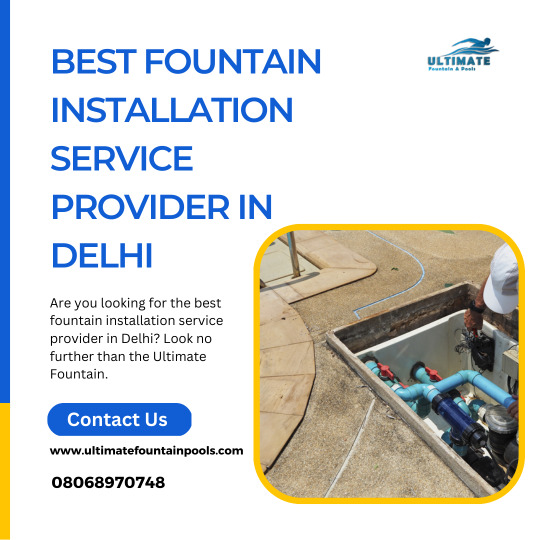
The Ultimate Fountain is a one-stop shop for all your fountain installation needs. Our team of professionals is highly skilled and experienced in fountain installation services. We understand the complexities of fountain installation and strive to deliver the best results for our clients.
Read More - Swimming Pool Construction
Our fountain installation services include the installation of both indoor and outdoor fountains. We use the latest technology to ensure our clients get the best results. We also provide that all our services are cost-effective and that our clients get value for their money.
At the Ultimate Fountain, we understand that every fountain installation project is unique. Therefore, we take the time to understand each client’s needs and create customized solutions to meet their needs. We believe in offering personalized attention to every client, no matter how big or small the project may be.
The Ultimate Fountain is proud to be one of Delhi's leading fountain installation service providers. Our team of experts has extensive experience in delivering the best results.
Here are the top swimming pool accessories provided by Ultimate Fountain
1. Jacuzzi Heater - A jacuzzi heater is a device used to heat the water in a jacuzzi or hot tub. It typically consists of a heating element and a thermostat and can be powered by electricity, gas, or solar energy.
2. Outdoor fountain - An outdoor fountain is a decorative water feature for outdoor spaces. It can be made from a variety of materials such as stone, metal, or ceramic, and it typically consists of a basin, a pump, and a nozzle from which the water is sprayed.
3. water curtain - A water curtain is a decorative water feature that creates a sheet or sheet of water that falls from the top of a structure. It can be used for both aesthetic purposes and to provide a cooling effect in warm climates.
Why Choose Us
Ultimate Fountain is a leading provider of water fountain solutions. With a wide range of products, from traditional water fountains to modern, interactive water features, Ultimate Fountain has something for everyone. Their products are designed to be highly durable and low maintenance, making them perfect for any setting. They also offer a variety of customizations, allowing customers to tailor their water features to their exact needs. Ultimately, Ultimate Fountain is the go-to source for all fountain needs.
visit to know more - swimming pool heating pump
0 notes